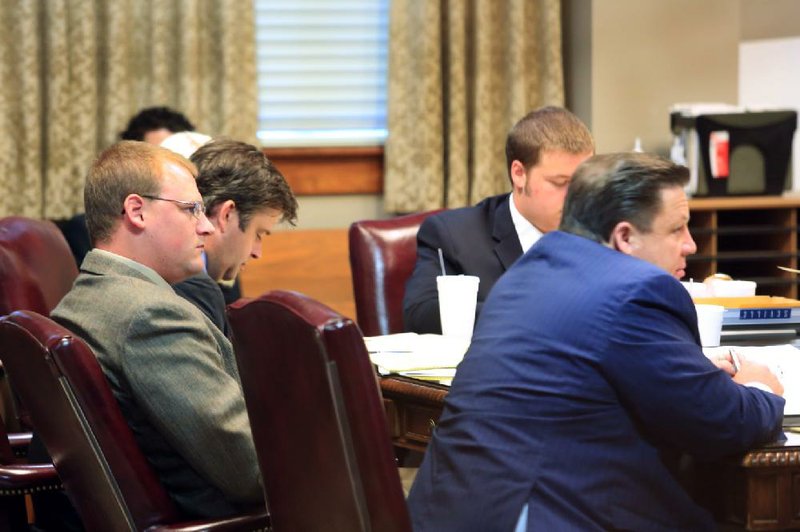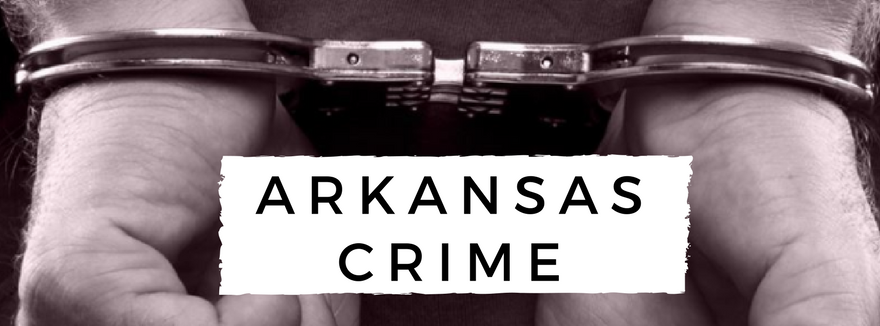Vastly different life choices set a 15-year-old boy, with two of his friends, and a dedicated Little Rock police officer on paths toward a deadly, pre-dawn encounter in a parking lot last year, defense attorney Bill James told a Pulaski County jury on Wednesday.
“Three of them were breaking the law and one was doing his job,” James said in opening statements in the manslaughter trial of Josh Hastings, the officer fired after killing the boy in August. “He’s in that [defendant’s] chair because he chose to put on an LRPD uniform like his father and others [in his family].”
With James promising that Hastings will testify, the 27-year-old Benton man could get his chance to tell jurors his side of the story by this afternoon. He faces up to 10 years in prison if convicted. Prosecutors could wrap up the first leg of their case this morning. Proceedings before Circuit Judge Wen-dell Griffen resume at 9 a.m. today.
Hastings shot Bobby Moore dead behind the wheel of the car on Aug. 12 as the teenager and his friends were trying to leave the Shadow Lake Apartments on West Markham Street, where they’d been breaking into cars. Hastings, on the scene to investigate a complaint about car break-ins, tried to stop them, confronting the moving car with a flashlight and a drawn pistol, identifying himself as a police officer and calling on the driver to stop, James said.
Hastings, on the force for five years, was careful to give the vehicle room to get around him and didn’t think the driver would try to run him down, James told the nine women and three men of the jury. But he fired when Moore’s car came right at him.
“He realizes the car is fixing to run over him. He doesn’t put himself in peril that they would run over him,” he said. “I’m not going to call them [the boys] a bunch of names. I’m going to say it like it is. They’re on juvenile probation and they’re committing a bunch of felonies.”
Discovering he’d killed a boy the first time he’d ever fired his gun in the line of duty was traumatizing for Hastings, James said. He accused authorities of seeking a scapegoat to answer for the teen’s death through an investigation led by detectives with “tunnel vision.” They focused too quickly on his client while ignoring damage to the car that proves Hastings is telling the truth about what happened, James said, saying defense testing far exceeds the review of the vehicle done by prosecutors - “a sixth-grade science project.”
Moore’s friends’ stories are too conflicting to be believed, James said, telling jurors that not only do the boys contradict each other in key points, but their stories to police are also internally inconsistent.
The “slight differences” in the teens’ stories are more about human error than they are deceit, chief deputy prosecutor John Johnson said in his opening statement. Both of them agree that the car was not moving toward Hastings when he fired, the prosecutor said. The discrepancies arise from where they were sitting in the car and how they reacted to being surprised by the sight of a flashlight-wielding policeman who shot their friend with little warning, Johnson told jurors.
When the car crashed after the shooting, the teens fled in different directions and never had a chance to meet up again, with police deliberately keeping them separate so they couldn’t collaborate on a story, the prosecutor said. But their stories are confirmed by physical evidence at the scene and the findings from Moore’s autopsy, Johnson said.
“How can they tell the same story … consistently with the medical examiner and crime scene?” Johnson asked.
Hastings arrived with good intentions but got carried away into “straight-up reckless behavior” that took him across the line into criminal behavior, Johnson said.
“The simple fact is officer Hastings was out there for all of the right reasons. He was out there to catch the bad guys. They needed to be arrested,” the prosecutor said. “But in his eagerness to put these three under arrest at all cost, he fired three shots.”
Jurors heard directly from the teens Wednesday afternoon. Both admitted that the three had been in the apartment parking lot “checking” cars, meaning looking for unlocked vehicles to steal from. Moore was shot about 5:15 a.m. but the three had been together since 8 p.m. the previous evening, randomly ending up at the west Little Rock apartment complex after a night spent unsuccessfully looking for parties, according to testimony. They said they decided to leave after Moore broke a car window to get into a vehicle.
During about 2 1/2 hours on the stand, Keontay Walker, a 17-year-old, front-seat passenger, said the three had no idea police had been called until Hastings shined his flashlight into their car. He estimated the car was moving at 15 mph when Hastings appeared from behind a Dumpster. The three briefly debated the merits of a high-speed police chase, Walker testified. But Moore brought the car to a full stop before he was shot, Walker said.
He heard the gunshots but didn’t see Hastings fire because some movement by the officer caused him to duck below the dash, Walker said.
“When I ducked down … I heard, ‘Stop or I’ll shoot,’” then gunshots, Walker said. “I heard Little Bobby take a deep breath.”
He said he could feel the car “jerk” like it was being shifted into reverse, then the car began moving backward, its movement ending when it struck a parked car and an awning. Walker said he got daubed with his friend’s blood because he had to crawl over Moore’s body to get out of the car and flee.
Challenged by the defense about why he described for police how the car drove “at” Hastings, Walker denied ever saying that, despite a transcript of the interview. He also said his account of “speeding” to leave was his attempt to describe how the car started from park, not how Moore was driving when they saw Hastings. And he flatly denied defense accusations that he had initially lied to police when asked how he came to be at the apartments.
Walker also bristled when prosecutors questioned how clear his memory was of that night, angrily denying that he received any medical treatment at the apartments after the shooting, despite a police report about how an ambulance crew examined the trembling Walker after the shooting.
Back-seat passenger Jeremiah Johnson, testifying five days before his 15th birthday, said Moore slowed down when Hastings revealed himself and ordered the car to stop.
“When the police said stop, [Moore] looked back and the police shot him,” said Johnson, no relation to the prosecutor, during his 80 minutes of testimony.
Questioned by the defense, Jeremiah struggled to explain why he told police at one point that the car was still going forward when shots were fired, saying that he had been trying to explain how the car was stopping when Moore was shot.
Front Section, Pages 1 on 06/20/2013

